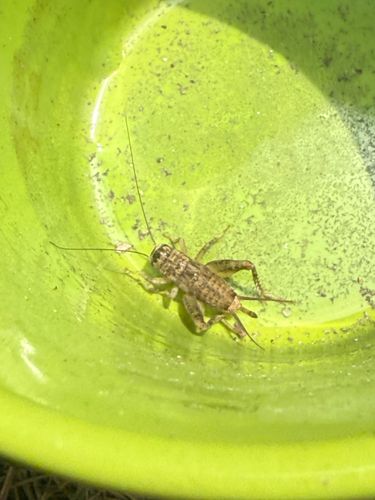Field Cricket
Scientific Name: Gryllus spp. (e.g., Gryllus pennsylvanicus, Gryllus assimilis)
Order & Family: Order: Orthoptera, Family: Gryllidae
Size: Typically 15-30 mm (0.6-1.2 inches) in length.

Natural Habitat
Commonly found in fields, grasslands, gardens, and other areas with abundant vegetation. They often seek shelter under rocks, logs, leaf litter, and in cracks in the ground.
Diet & Feeding
Omnivorous, feeding on a wide range of organic matter including seeds, seedlings, fruits, fungi, and other small insects (dead or alive). They can also feed on decaying plant matter.
Behavior Patterns
Crickets are known for their nocturnal chirping, which is produced by males rubbing their forewings together (stridulation) to attract females. They are generally solitary but can be found in groups in favorable habitats. Their life cycle typically involves egg, nymph, and adult stages, with nymphs resembling smaller, wingless versions of adults.
Risks & Benefits
Potential risks include minor agricultural damage to young plants and crops in large numbers. They can also be a nuisance indoors due to their chirping. Benefits include serving as a food source for various predators (birds, small mammals, reptiles, amphibians, other insects) and contributing to decomposition by feeding on decaying organic matter. They are also widely used as bait for fishing and as pet food.
Identified on: 8/31/2025